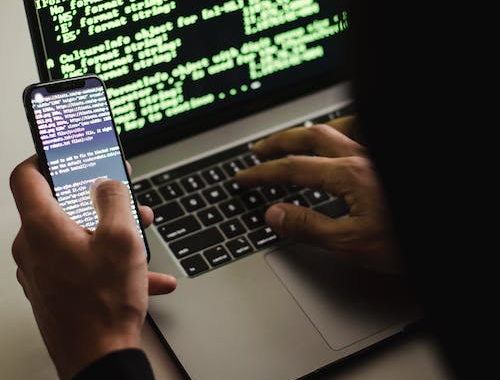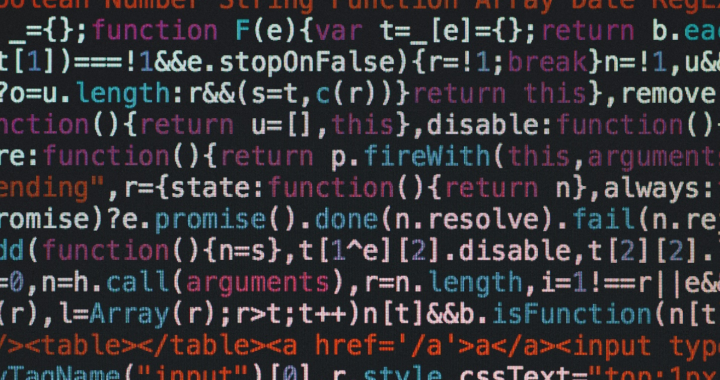In today’s technologically driven world, maintaining security, privacy, and integrity is paramount. As a result, digital forensics has risen to prominence, serving as an essential tool in criminal investigations and civil litigations.
In this complex field, digital forensic experts navigate the intricate web of digital data, unraveling valuable information and hidden truths. However, to ensure the accuracy and reliability of the findings, strict standards and best practices must be followed.
The Realm of Digital Forensics
Digital forensics, sometimes known as cyber forensics, is a specialized discipline that focuses on recovering, analyzing, and interpreting digital data.
The scope of digital forensics extends beyond the realm of computers, encompassing any device capable of storing digital data, such as smartphones, tablets, and even certain modern appliances.
The information extracted by digital forensic engineers often plays a pivotal role in legal proceedings, shaping the course of both criminal and civil cases.
Significance of Standards and Best Practices in Digital Forensics
In a world defined by digital interactions, ensuring the authenticity, reliability, and admissibility of digital evidence has become more critical than ever. This is where internationally accepted standards and best practices in digital forensics come into play.
They provide a framework that guides every aspect of the digital forensic process, from evidence collection to case analysis and final reporting.
Harmonizing the Field
One of the primary reasons for enforcing these standards and practices is to harmonize the field. Given the range of devices, systems, and digital environments that a digital forensic expert may encounter, the existence of a universal set of standards and best practices ensures that investigations remain consistent and reliable, irrespective of the specifics of the case or the technology involved.
Ensuring Admissibility of Evidence
In the courtroom, the admissibility of digital evidence heavily depends on the way it was collected, preserved, and analyzed. Adherence to recognized standards and best practices not only guarantees the integrity of the evidence but also its acceptance in legal proceedings.
Thus, these guidelines provide a benchmark for ensuring that the digital forensic services you opt for are legally sound.
Maintaining Professional Competence
The dynamic nature of technology requires digital forensic engineers to constantly update their skills and knowledge. International standards and best practices act as a roadmap for continuous learning, guiding forensic professionals toward competency in the latest methodologies and technologies.
Upholding Ethical Considerations
Ethics play a central role in any investigative process. In digital forensics, professionals deal with sensitive data that require an acute awareness of confidentiality, impartiality, and respect for privacy.
Standards and best practices in the field provide the ethical framework that all practitioners must abide by, thereby ensuring their investigations are not only legally valid but also morally sound.
Internationally Recognized Standards in Digital Forensics
The complex nature of digital forensics necessitates a robust framework of international standards to guide the work of digital forensic experts. These standards offer precise guidelines for conducting investigations, ensuring the consistency, reliability, and admissibility of digital evidence.
ISO/IEC 27037:2012: Identification, Collection, Acquisition, and Preservation
ISO/IEC 27037:2012 offers comprehensive guidelines for identifying, collecting, acquiring, and preserving digital evidence—maintaining the integrity of digital evidence from the moment it’s discovered.
It outlines protocols for securing the digital crime scene, documenting digital evidence, and preserving this evidence to prevent data alteration or degradation. This rigorous approach ensures that the digital evidence maintains its original state throughout the investigation.
ISO/IEC 27041:2015: Assurance in Selection and Testing of Tools
ISO/IEC 27041:2015 provides assurance in selecting and testing digital forensic tools and processes. It recognizes that the tools used by digital forensic engineers can significantly impact the outcome of an investigation.
Therefore, this standard establishes criteria for selecting appropriate tools, testing their functionality, and verifying their performance. It further offers guidelines for conducting unbiased, reliable investigations, reducing the chance of error or bias that could compromise the findings.
ISO/IEC 27042:2015: Analysis and Interpretation of Digital Evidence
ISO/IEC 27042:2015 provides a structured approach to analyzing and interpreting digital evidence. This standard acknowledges that raw digital data must be accurately translated into meaningful information to serve as valuable evidence.
It offers strategies to extract relevant data, correctly interpret it, and evaluate its relevance and significance to the case at hand. This rigorous analytical approach helps digital forensic services draw valid, defensible conclusions from digital evidence.
ISO/IEC 27043:2015: Incident Readiness and Response
ISO/IEC 27043:2015 provides a comprehensive digital forensic readiness and incident response framework, preparing organizations to respond effectively to potential incidents and ensuring they have the necessary resources, processes, and protocols in place.
From identifying and reporting incidents to their systematic investigation and mitigation, this international standard covers every step of the response process, fostering organizations to react to and prepare for incidents.
Best Practices: Ensuring Excellence in Digital Forensic Services
Beyond the foundational framework offered by internationally accepted standards in digital forensics, best practices serve as the guiding principles that drive the pursuit of excellence in digital forensic services. By adhering to these best practices, digital forensic engineers can maintain the highest level of professionalism, reliability, and credibility in their overall investigations.
Documentation: Building a Foundation of Trust
A meticulous and thorough documentation of each step taken during the investigation is critical in digital forensics services. Every action, from the initial identification of digital evidence to its analysis and interpretation, should be documented in a detailed, chronological manner.
This best practice in digital forensics ensures the repeatability and reproducibility of the investigation, lending credibility to the findings and building a foundation of trust in the work of digital forensic experts.
Continual Education: Staying Ahead of the Digital Curve
Digital technology is characterized by constant evolution and transformation. Consequently, continual learning is vital in the field of digital forensics.
Digital forensic engineers must stay abreast of new forensic tools, technologies, and methodologies to adapt to changing and ever-evolving digital landscapes effectively.
This commitment to continual education empowers them to handle a wide array of cases, even those involving the most recent technological advancements.
Chain of Custody: Safeguarding the Legal Viability of Evidence
A well-documented chain of custody is crucial in digital forensics services. From the moment evidence is collected until it’s presented in court, each instance of handling, transfer, and storage must be recorded accurately, in chronological order.
This best practice in digital forensics protects the integrity of the evidence, proving that it hasn’t been tampered with or altered. Consequently, it safeguards the legal viability of the evidence, increasing its likelihood of being admissible in court.
Quality Control: Ensuring the Highest Standards of Service
Quality control mechanisms, such as regular audits, peer reviews, and validation of tools and processes, play a vital role in digital forensics services.
These mechanisms provide an objective assessment of the investigation’s quality, helping identify any potential errors or areas for improvement.
By integrating quality control into their practice, digital forensic experts or engineers can maintain the highest standards of service, delivering reliable, accurate, and robust findings.
Ethics: Upholding the Professional Integrity of Digital Forensics
The field of digital forensics often involves dealing with sensitive, confidential data. Hence, the highest level of professional ethics, including impartiality, confidentiality, and honesty, must be upheld throughout the investigation.
By adhering to ethical principles, digital forensic engineers or experts not only demonstrate their professional integrity but also ensure the respect and protection of individuals’ as well as organizations’ rights, thereby fostering trust and credibility in their services.

The Future of Digital Forensics: Adapting to an Ever-Evolving Digital Landscape
As we look forward, the field of digital forensics stands on the precipice of rapid transformation. With the constant evolution of technology and the increasing sophistication of digital crimes, your digital forensic services provider must be prepared to navigate an ever-evolving landscape.
Emerging Technologies and Their Impact
Emerging technologies such as Artificial Intelligence (AI), Blockchain, and the Internet of Things (IoT) are reshaping the digital space, presenting both opportunities and challenges for digital forensic engineers.
These technologies can offer powerful new tools for digital investigation, enhancing the ability to analyze and interpret digital evidence. On the other hand, they create new avenues for digital crime, necessitating updated skills and methodologies to investigate effectively.
Increasing Importance of Collaboration
The complexity of modern digital environments will likely necessitate increased collaboration within the field. This could involve cross-disciplinary partnerships, bringing together experts from different areas to handle complex investigations.
Collaboration may also extend beyond borders, with international cooperation becoming more important in tackling global cybercrime.
Continual Evolution of Standards and Best Practices
As the digital world continues to change, so will the standards and best practices guiding digital forensics. These guidelines must evolve in response to new technologies, methods, and ethical considerations, ensuring that digital forensics remains a reliable and effective discipline.
This highlights the importance of continual education, as digital forensic experts and digital forensic engineers must stay abreast of these upcoming changes to maintain their competency.
The future of digital forensics is poised to be as dynamic as the digital world itself. It presents exciting opportunities for growth and innovation, even as it demands adaptability and vigilance from professionals in the field.
As they navigate this future, the adherence to internationally recognized standards and best practices will remain a steadfast guide, ensuring the credibility of their work.
To conclude, the field of digital forensics is a complex yet crucial domain in the modern digital world. By adhering to internationally recognized standards and best practices, digital forensic experts and digital forensic engineers can ensure the integrity, reliability, and accuracy of their investigations, making a significant impact in contributing to the pursuit of justice in the digital realm.
Secure Your Digital World with Eclipse Forensics
If you need professional, ethical, and reliable digital forensic services, look no further than Eclipse Forensics. Our team of seasoned digital forensic engineers strictly adheres to the highest standards and best practices, delivering unparalleled service in every investigation.
So, what are you waiting for? Contact us today to help you navigate the complexities of the ever-evolving digital landscape.






















